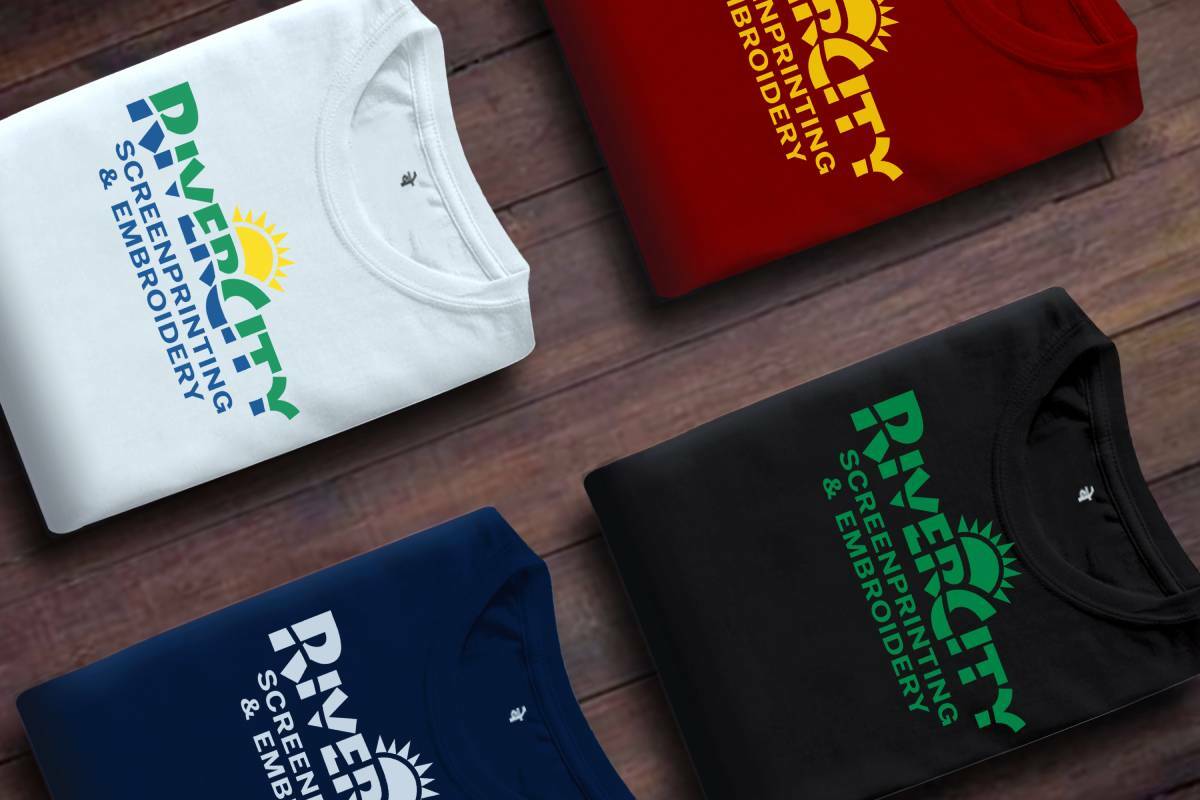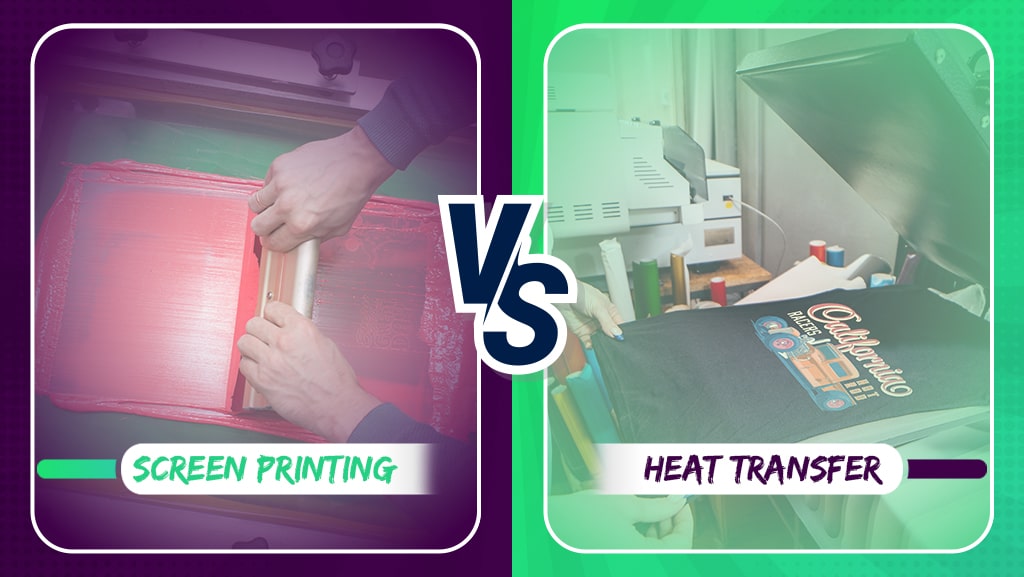The Basic Principles Of Tx Tees
The Basic Principles Of Tx Tees
Blog Article
About Tx Tees
Table of ContentsThe smart Trick of Tx Tees That Nobody is Talking AboutEverything about Tx TeesThe Of Tx TeesThe smart Trick of Tx Tees That Nobody is Talking AboutTx Tees for Beginners4 Easy Facts About Tx Tees DescribedThe Single Strategy To Use For Tx Tees
Add up other prices, like the number of utilities it takes to run the shop and the price of ink and emulsion per design. Take the print listed below.The emulsion must only be a few cents given that you 'd only need to layer one display for this job. Exactly how much should you bill per shirt to make a revenue? Normally, printers attempt to make up to 45% profit on a print job. Right here's a table to aid you determine that: overall expense per thing percent of wanted profit as a decimal (example:.25 or.45) profit made per product per task Currently allowed's speak about the profitability of DTF.

With DTF, you can print a handful of t shirts, or just one. Both screen printing and DTF have their particular niches in the globe.
See This Report on Tx Tees
The ideal method to recognize? Ask around and see what print shops like your own are doing. custom t-shirt design. Attempt both out and see which you like better
When you're selecting what kind of printing method to make use of for printing your artwork layouts on your garments, it's important that you understand the distinctions in between these 2 techniques so you can optimize outcomes while minimizing expenses. Screen printing is one of the most generally used technique for printing styles on textiles.
DTG printing is likewise called place or straight to garment printing because it prints only what is needed as opposed to making a screen as screen printers do. http://dugoutmugs01.unblog.fr/?p=3485. Screen printing functions by screen filler squeegee display printing ink screen mesh display, then transferring the photo to garment making use of warm and/or pressure
The DTG printer makes use of special dye-sublimation inks that are used into a pre-designed photo by a digital printing system. The inks enter into the fabric, enabling dynamic shades and extraordinary detail. It's likewise known as area or straight to garment printing since it publishes only what is required as opposed to making a screen as display printers do.
The Basic Principles Of Tx Tees
Initially, it's much quicker - you can print a fullcolor image in minutes, in contrast to hours for screen printing. Second, there's no established time or expenses included - you can publish any kind of design you like, without having to produce a display initially. Third, there's no waste - since display printers display print one layout at once, they have to screen each color individually.
The paper is extremely costly and can just be made use of as soon as. Once it's published on, it has actually to be thrown out. - The initial acquisition price is less than the upfront investment of DTG printers- You can print multi-color designs one display at once rather of needing to publish each shade separately like DTG printing.

Examine This Report about Tx Tees
Instead of utilizing display mesh as screen printers do, dye sublimation printers make use of laser technology to transfer your photos onto garments or paper. A heat process moves the color from its solid-state directly into the gas stage which in turn merges it onto textile substratums when they are rapidly heated up to heats under high pressure.
Sublimation printing is environment-friendly. It uses less water than screenprinting, and since it does not entail using dangerous solvents, it's secure for all kinds of apparel. The dye sublimation inks are likewise unsmelling when cured, unlike screen printers that utilize dangerous chemicals during the screen printing process that leave an unpleasant odor.
They likewise save money on expensive tools like exposure devices since dye sublimation printers don't require a UV exposure system or a flash remedy oven that is commonly made use of in display printing (screen printer). What is direct to garment printing (DTG Printing)? DTG printing is a digital screenprinting process that prints directly onto fabric using specialized inkjet printers
The 9-Minute Rule for Tx Tees
DTG printing uses lots of benefits over traditional screenprinting, consisting of the capability to print photo top quality pictures, greater shade vibrancy, and the capability to print layouts on darker materials. DTG printers work by warming the fabric ink until it transforms right into a gas. The gas then permeates the textile, bonding with the fibers to produce a permanent print.

Display printers simply prepare their display after that begin publishing till they lack item or ink.- There is a vast array of seasoned screen printers around the world, which can be valuable for novices. - It's a slower process - screen printers frequently have to wait for the ink to completely dry prior to they can publish the next color- Display printers call for hand-operated labor, so there's a greater discovering curve and it takes longer to produce a top quality design- Display printing isn't as exact as DTG printing, so you might get some "blood loss" of shades from one part of the image onto another otherwise done appropriately.
Unknown Facts About Tx Tees
Instead of utilizing screen mesh as display printers do, color sublimation printers utilize laser modern technology to transfer your photos onto garments or paper. A heat procedure transfers the color from its solid-state straight into the gas stage which in turn merges it onto fabric substrates when they are swiftly heated to high temperature levels under high pressure.
Sublimation printing is environment-friendly. It uses less water than screenprinting, and due to the fact that it doesn't include making use of damaging solvents, it's secure for all sorts of see this page clothing. The color sublimation inks are also unsmelling when cured, unlike screen printers that make use of hazardous chemicals during the display printing procedure that leave behind an unpleasant smell.
They additionally save money on expensive tools like exposure units considering that color sublimation printers don't require a UV exposure system or a flash treatment stove that is generally utilized in display printing. What is straight to garment printing (DTG Printing)? DTG printing is an electronic screenprinting procedure that prints directly onto fabric utilizing specialized inkjet printers.
Not known Details About Tx Tees
DTG printing uses lots of benefits over standard screenprinting, including the ability to print photographic quality photos, better shade vibrancy, and the capability to print styles on darker textiles. DTG printers function by warming the textile ink up until it develops into a gas. The gas after that penetrates the material, bonding with the fibers to create a permanent print.
Report this page